Back in March, the most diverse group of designers were selected as finalists for the LVMH Prize 2019. This year’s list celebrates talent from across the world, with designers from Israel, Nigeria and South Africa making the cut for the first time ever, united in their desire to push fashion into a better tomorrow. Driven by a commitment to ecological responsibility as we face the climate crisis together, the message was that creativity is no longer enough, the next generation of talents have to conscious of ethical and environmental concerns. Three of the eight finalists — Bode, PHIPPS and Hed Mayner — were brought together for the opening day of Paris Fashion Week Men’s. Together, they provided a call-to-arms.
“There’s so much talk about sustainability and global awareness but can you create something powerful with it?” Spencer Phipps answered when asked about the pressure of heightened attention following the LVMH Prize announcement. “Our task is delivering our message meaningfully and powerfully,” he added. “It’s about being able to tell the narrative of historical techniques and fabrications and then figuring out how we can bring this to market in larger way,” luxury upcycler and make-do-and-reimaginer Emily Bode agreed. “Ultimately, it’s really about changing the culture of the fashion industry in the way we relate to our personal histories,” she added. Along with Israel-born Hed Mayner, each of these three LVMH Prize finalists took another confident step forward in accomplishing their like-minded missions.
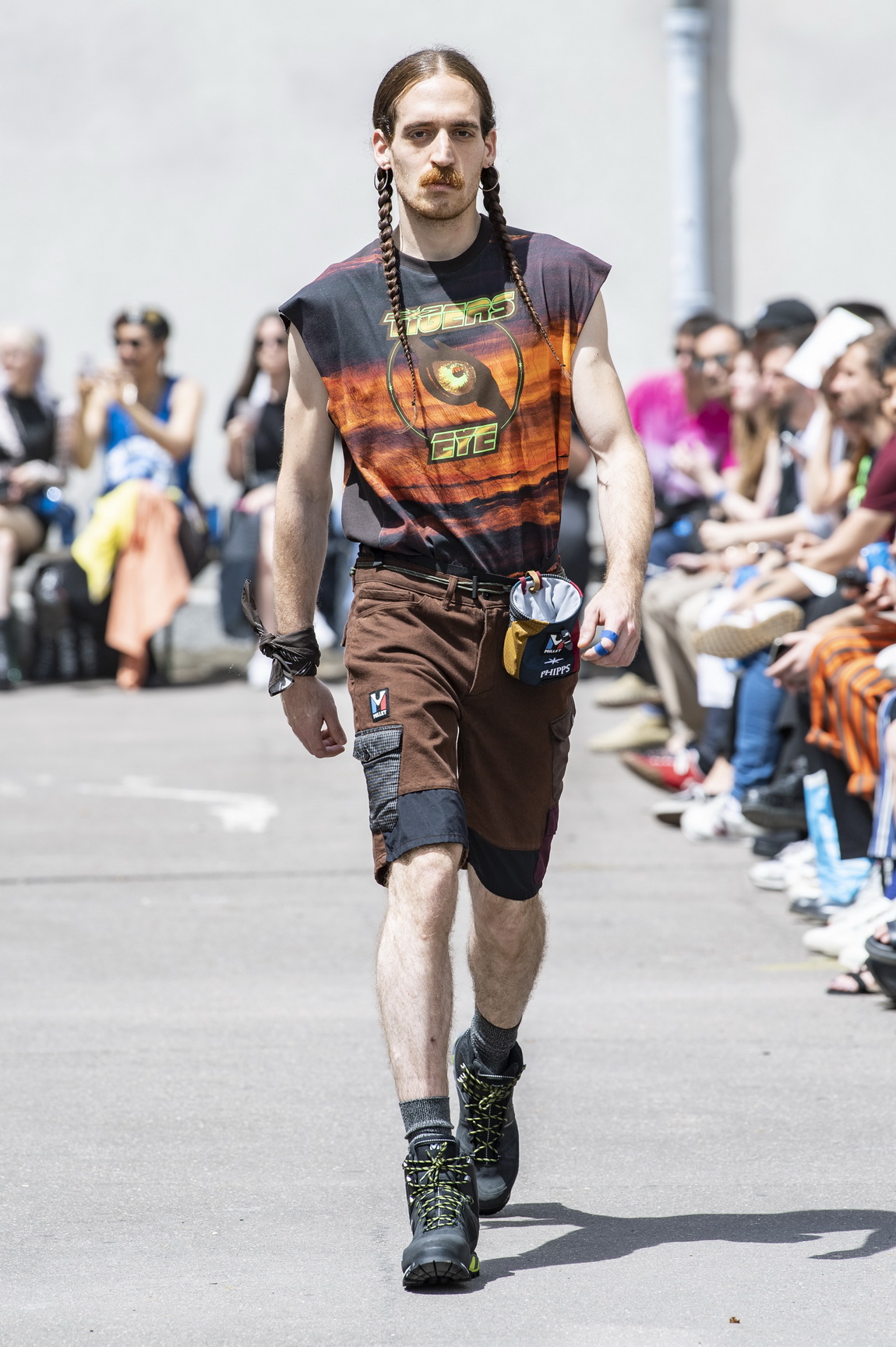
“We were looking at the classic characters of Americana, from Richard Prince cowboys to Avedon and beyond” Spencer explained post-show. The collection was sparked by the discovery of historian Frederick Jackson Turner’s Frontier Theory. “It’s interesting because there’s this savagery to the frontier, the juxtaposition of manifest destiny and ideas of creating a modern world with death and war.” It was a collection that took us on tour through man’s relationship with planet earth: “From the Goldrush and the physicality of mining through to this hippy new age spirituality,” he added with a laugh. “I’m from San Francisco and my sister is the buggiest hippie I know.” He enlisted her to write new age descriptive captions for the clothes.
As Spencer posed meteorological metaphorical questions, the frow were forced to question themselves; why are we here and what does it all mean in the face of the vastness of existence, and how to innovate on a distinctly human scale. “It emphasises the utter insignificance of man between time, space and the earth… we’re all just dust,” fashion critic Tim Blanks mused. We might be fragments of dust but we can make a difference. And Phipps continued its mission for transparency and traceability of production and manufacturing, expanding its offering with naturally-dyed, glue-free biodegradable suiting in British wool. The result was a relaxed-fit, half double-breasted jacket and double-pleated straight trousers, which added a sartorial options to his hyper-functional wardrobe.
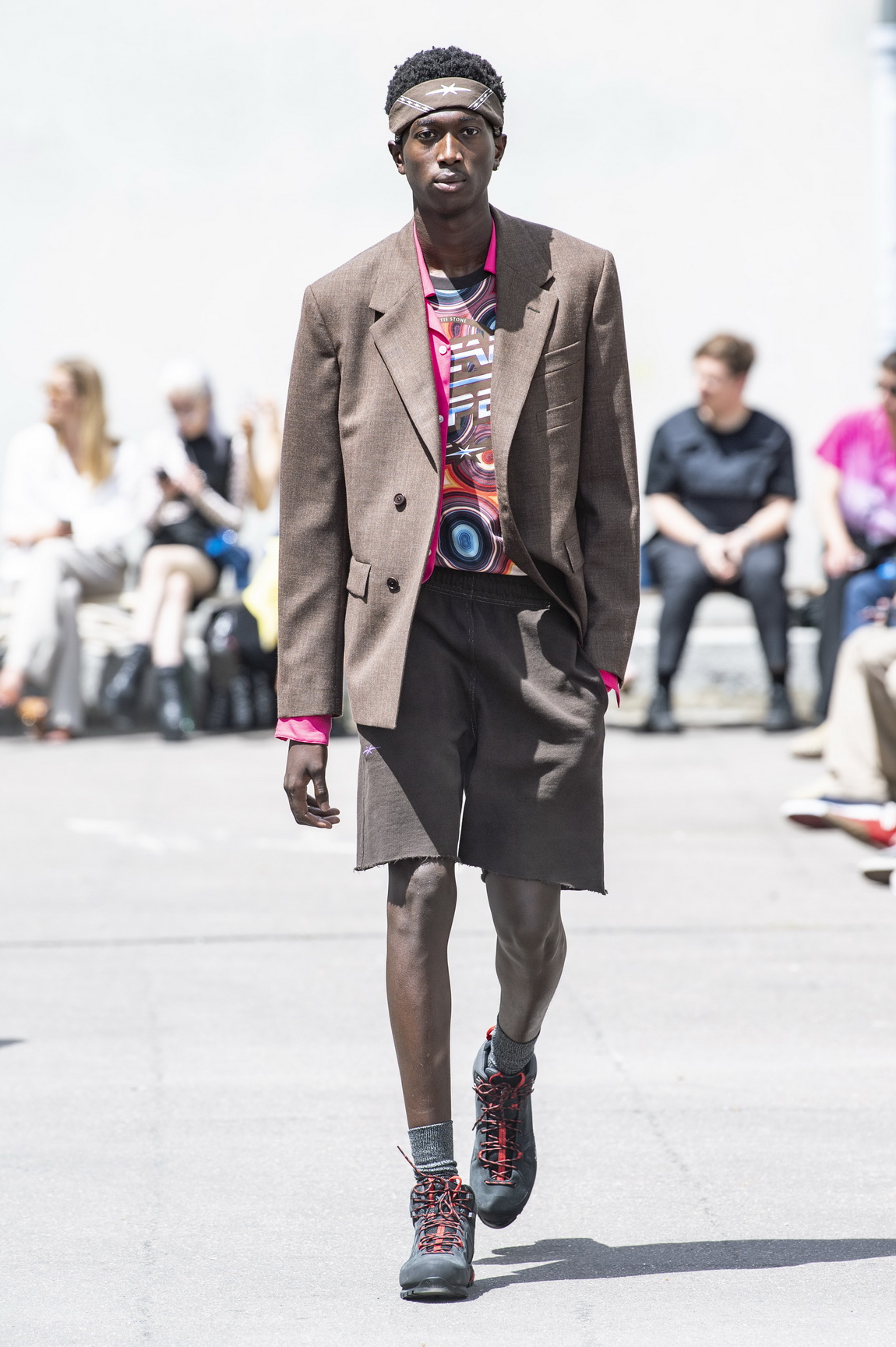
“For me, it’s about creating useful stuff. I always go back to the word: purpose,” he told us. “It has to be practical and useful. Of course, chaps are useful for a certain activity and hiking gear comes in handy for treks but then a suit is useful too. Everything just has to be created responsibly.” After being approached by Millet, Phipps collaborated on a comprehensive capsule of high-performance outerwear pieces that fused close to a century’s worth of French savoir-faire in mountaineering with the LVMH Prize finalist’s aesthetic and ethically driven practice.
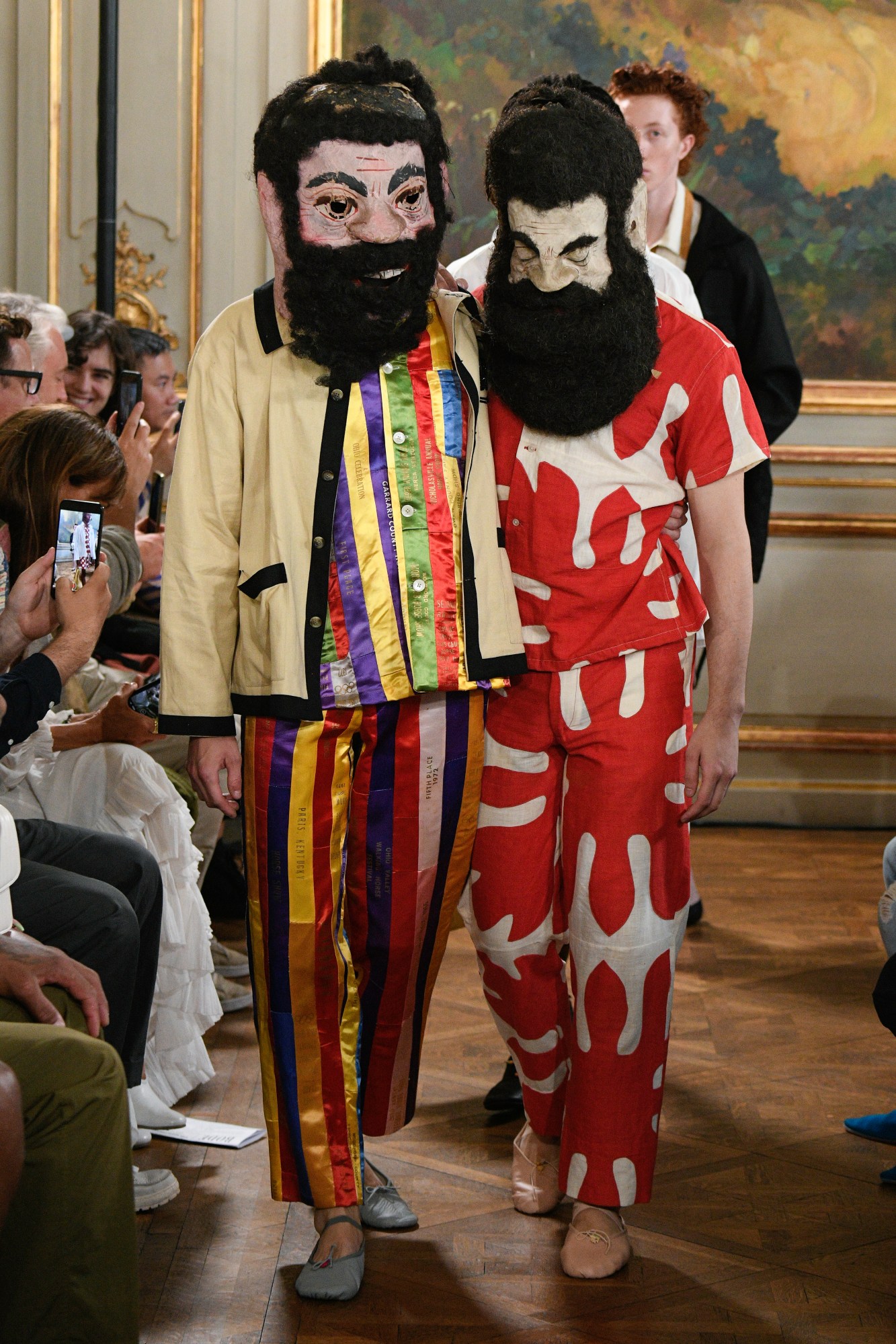
As Phipps built a collection around his love of rock climbing and admiration for Americana, Bode made its Paris fashion Week debut concentrating on similar Americana musings. Since her label’s inception in 2016, Emily has looked to reinvigorate traditionally domestic materials as wearable garments to create one-of-a-kind heirlooms for a new generation to treasure. For spring/summer 20, she invited us on a tour through her familial ties to the Bode Wagon Company, a Cincinnati-based wagon building workshop that operated between 1840 and 1920.

“The narrative speaks to a specific time in history,” she explained, “that of their renowned commission for the Barnum and Bailey and Ringling Brothers Circus for ornate and elaborate show wagons,” she added. The painted and engraved tableaus of animals, far-away lands, and dreamscapes which carried the circus as they traveled through the expansive American country found themselves on of hued crochets and novelty knits, rich earthy striped workwear, hand painted silk shirts and canvas jackets, nylons and linens with familial imagery, suede welding jackets, and signature Bode patchwork. “I envisioned how my family and their wagon fabrication studios were colourfully transformed by the great American circus.” Emily slowed the pace down at the show, as models donned ballet flats and carefully considered each step forward. Slo-mo slow-fashion. The message was: Bode is conscious to the core.
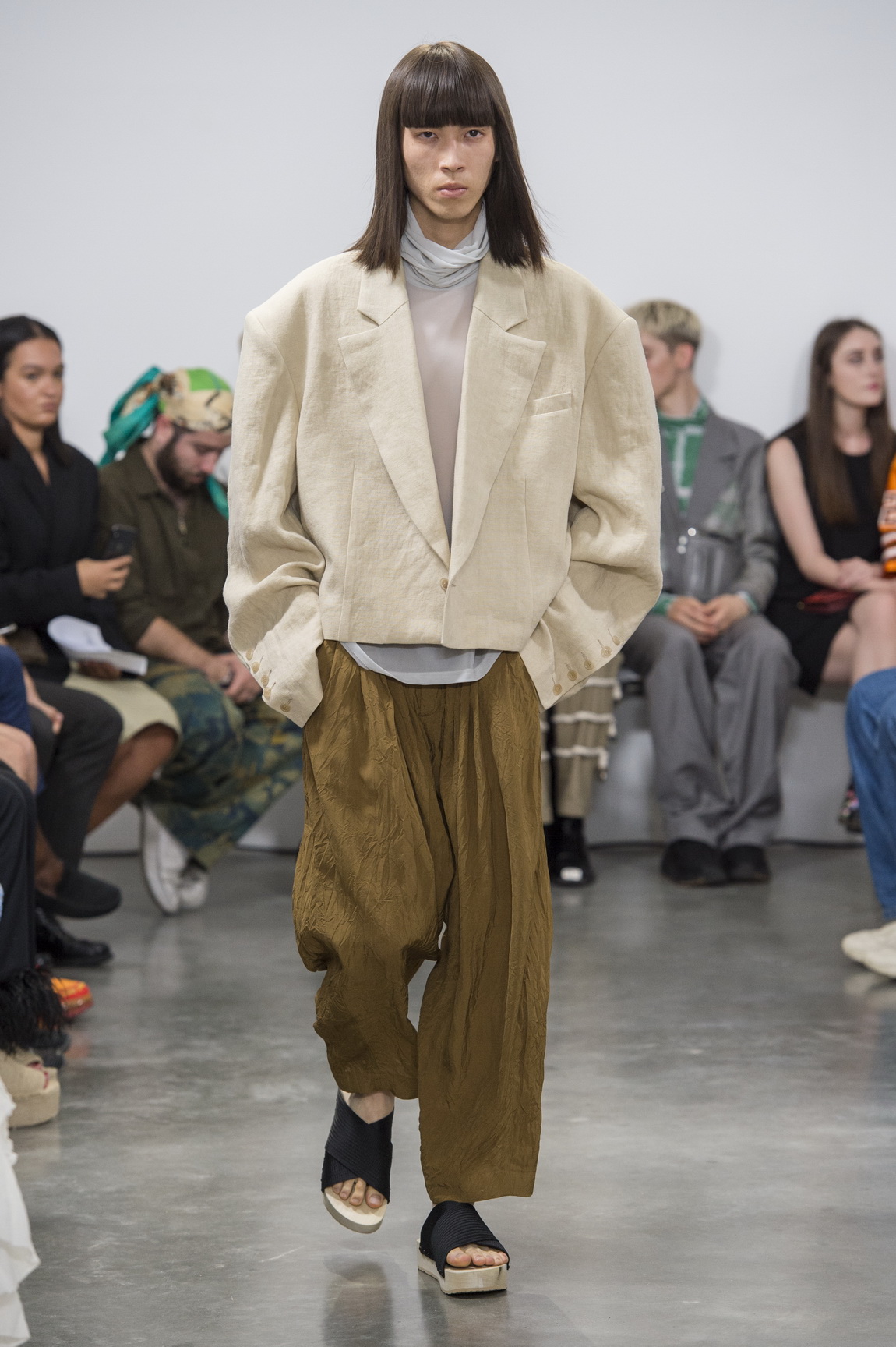
Since the inception of his eponymous label in 2014, Israel-born Hed Mayner has infused his nomadic forms with ideas of spirituality, tradition, vulnerability, power and nobility. Hed’s collections have continually probed tensions between fluid and structured pieces, influenced by traditional Jewish orthodox tailoring and the military outerwear that surrounded his youth. For spring/summer 20, the Israel-born designer reduced classic wardrobe pieces to the very core of their function as staples became sartorial sculptures.
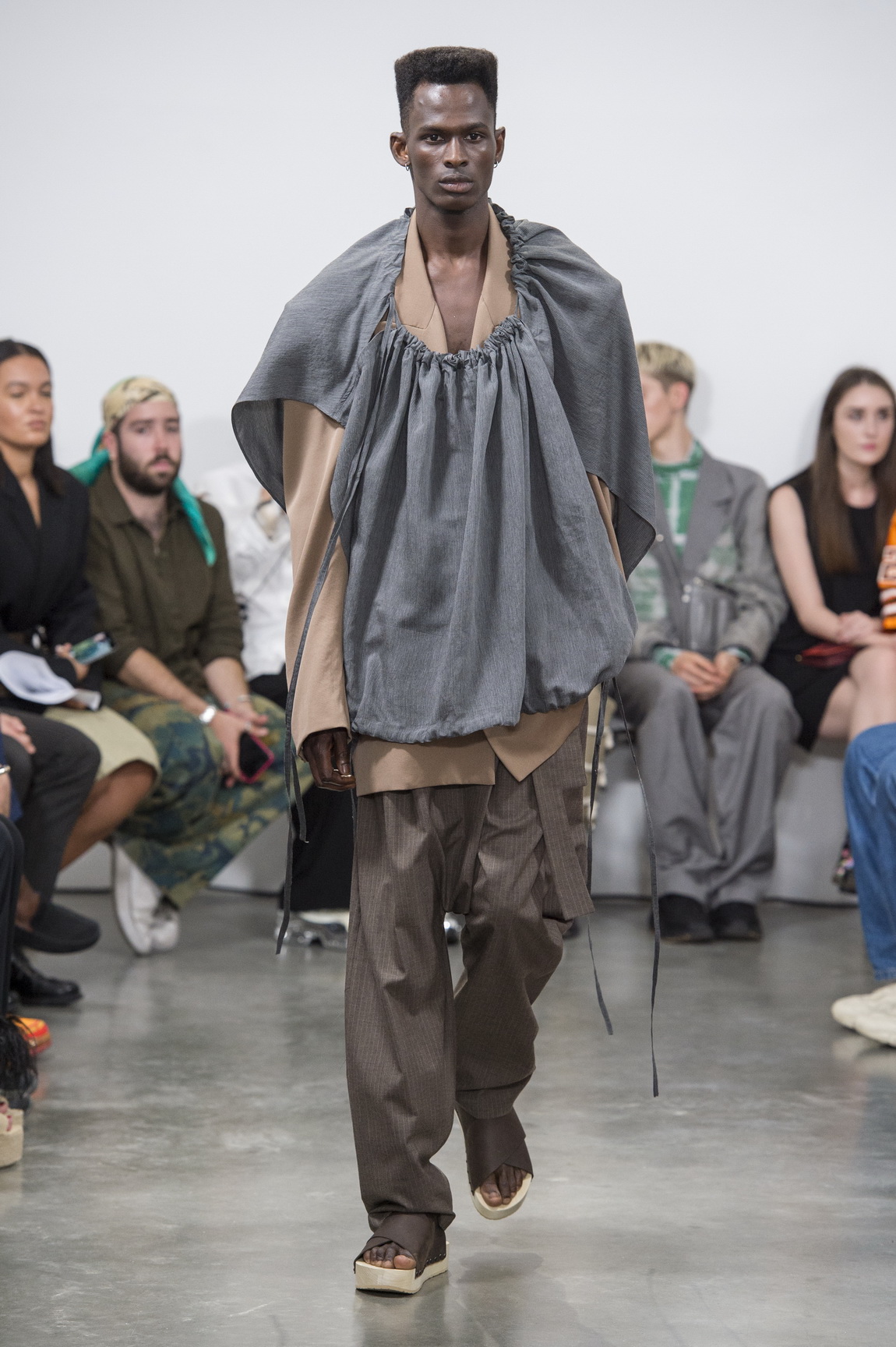
Moving beyond the military influences of previous seasons, his silhouette shape-shifted into new forms with a deepend sense of nature and freedom. As jackets and shirts mutated into simple squared panels that floated around the body, knitwear was sliced to become ponchos, double breasted jackets were more like summer evening blankets as opposed to office wear, and T-shirts moved like capes. There was a purified sense of restraint throughout but this collection had a soft power to it as the familiar was given an otherworldly ease. “The collection set its atmosphere by retaining the memory of how things were in a pre-technological world,” he explained. Along with Phipps and Bode, there was a longing for a lost world alongside an optimism for the future.
